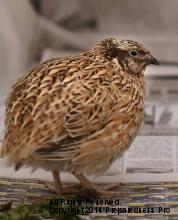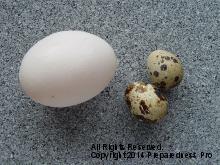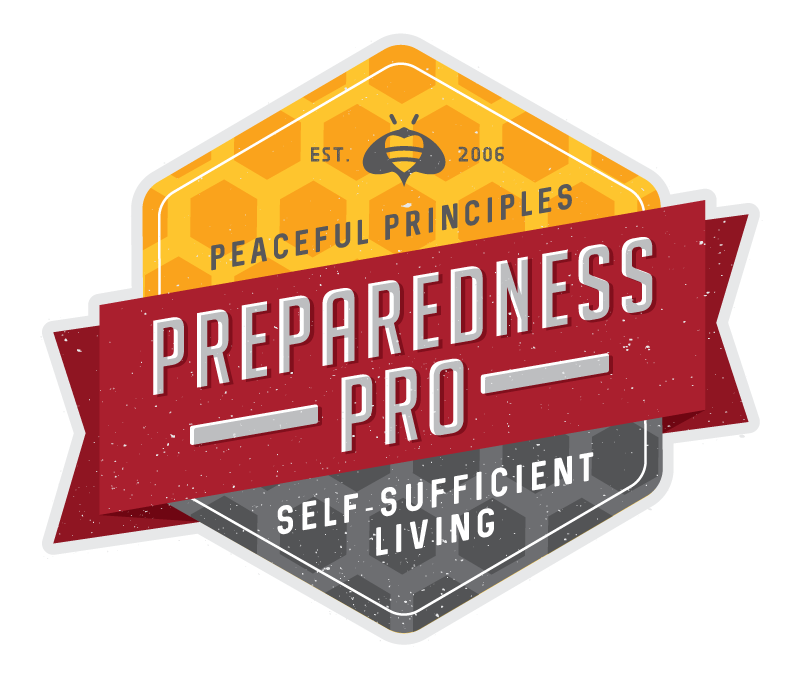Is raising quail a realistic livestock project for you?
So, you want to live more self-sufficiently but your city ordinances won’t allow chickens or big gardens? You live in an apartment which limits your “self-sufficiency square footage,” or is limited to your balcony. These conditions are deal killers. They just need a little more knowledge thrown at them in order to overcome them. Let’s go to work then today as I share with you a way to raise some of your own self-sufficiency in the form of QUAIL!
ACCESSIBLE: While there are many cities which unconstitutionally ban the raising of chickens, you’re likely to find no such city OR state restriction for raising quail—though there may be some areas in which you may have to be sure to refer to your quail as the “family pets”. Even in traditional apartment living which may restricts dogs and cats, you’re likely to find some wiggle room to raising quail. In doing so, you may discover that you enjoy raising quail even better than raising the traditional backyard homestead animals such as rabbits, chickens or Nubian goats. I bet ya most Home Owners Associations have never even thought about putting restrictions on raising quail. No American flag, yes, but quail? Not yet.
Thanks to them only needing 1 to 2 square feet per bird, you can easily raise quail on your apartment balcony or the stereo-typical “squished condo size backyard”, thanks to their smaller body size and less of a need to roam around unless you’re raising the hunting dog training kind. Otherwise, just use a cage that’s set up to have the waste fall to the bottom just like Tweety Bird’s cage. (I suggest using hay instead of newspaper. The straw at the bottom will cut down on the presence of flies and only needs to be changed once a week typically. The birds to need to be protected in the winter from extreme cold and strong winds, but that can easily be accomplished using a strong tarp.
 EASY: Quail really are the perfect starter livestock. For starters, quail are significantly cleaner and quieter than chickens. You just don’t have those annoying moments that can accompany the chickens. Some quail are known for an even better disposition than their counterpart species, but even those that are considered more “energetic” are still believed to be much less hassle than chicken. They are friendly with fun personalities. (check out YouTube videos. I particularly like what I’ve seen with the ease of raising the Large Brown Coturnix Quail) Unlike roosters you don’t have to worry about those loud males. (listen to their call here at about the 34 second mark) Male quail are very loyal to the females too, which brings about a unique dynamic that’s more settled than I observed with the chicken and rooster setting. While they do require constant access to food and water, any of your modern feeders will be able to provide that with you merely ensuring that the dispensers are always full. They are smart birds, for sure and they’re quite curious and as such you could even get away with putting a rabbit water feeder in their cages and they’ll soon figure out how to peck at it for water.
EASY: Quail really are the perfect starter livestock. For starters, quail are significantly cleaner and quieter than chickens. You just don’t have those annoying moments that can accompany the chickens. Some quail are known for an even better disposition than their counterpart species, but even those that are considered more “energetic” are still believed to be much less hassle than chicken. They are friendly with fun personalities. (check out YouTube videos. I particularly like what I’ve seen with the ease of raising the Large Brown Coturnix Quail) Unlike roosters you don’t have to worry about those loud males. (listen to their call here at about the 34 second mark) Male quail are very loyal to the females too, which brings about a unique dynamic that’s more settled than I observed with the chicken and rooster setting. While they do require constant access to food and water, any of your modern feeders will be able to provide that with you merely ensuring that the dispensers are always full. They are smart birds, for sure and they’re quite curious and as such you could even get away with putting a rabbit water feeder in their cages and they’ll soon figure out how to peck at it for water.
AFFORDABLE: Starting your quail raising is very affordable. $2 can get you a pair of quail in early spring or late fall with prices ranging from $1 to $5 the rest of the season. Or you can go the egg route and purchase 50 fertilized eggs for about $20-$25. (Here's a dozen for $8 for $7.99 shipping)
Since they are fine in smaller spaces, that means you’ll spend less on the structure you keep them in as well. This makes their production footprint much more economical than chickens even if you were to compare the egg output ounce for ounce.
When comparing the cost between raising chicken eggs vs. quail eggs, I find that the quail route is less expensive and less work. I mentioned that they always need access to their food and water, but a 50# bag of feed at about $25 (Purina Game Bird) goes a LONG ways. Quail DON’T overeat. They only eat what they need, unlike most of us humans. *grin* so having their food and water out all the time won’t cost you more. In fact, it will cost you less as you’ll keep the fowls at ease knowing that the food and water is always there. A quarter teaspoon of apple cider vinegar in their water dispenser will make their feathers more lush and abundant and a bit of diatomaceous earth in their feeder will ensure that the worms and parasites have minimal effect on them internally. And if you find yourself with leftover corn, cake, rice, lettuce or pasta, they’ll be happy as can be if you share it with them. (no meat, no cuttings from the garden, and no really salty foods though!) (My preferred feeder here: )
PRODUCTIVE: Quail mature in about 6 to 8 weeks after their 15-18 day incubation period. At 8 to 12 weeks old, they are producing eggs. You can even extend their egg producing season easily by providing them with 15-16 hours of light a day. (Perhaps you’ll want to use an outdoor timer).
Quail eggs are about the size of a grape tomato, so keep that in mind when comparing them to other eggs. Quail lay approximately 300 eggs per year, or more, depending on the species you use. A quail egg is about 20% the size of a regular chicken egg. So when I calculate how many I want to raise for the use of their eggs, I simply take my standard egg count that I need and multiply it by 5. And I just love how friendly they were when I got a chance to gather some eggs at the home of a friend of mine! I couldn’t believe the night and day experience between gathering quail eggs and chicken eggs. The only problem I had was that since the quail eggs are spotted, I kept freaking out thinking that I was grabbing manure. (I know. I’m a dork!)
 NUTRITIOUS: Overall, the quail eggs, ounce for ounce, have a little more nutrients and minerals, etc. than chicken eggs. But I’ve seen a whole lot of zealots that would tell you that the quail egg has 3-5 times more nutrients than the other poultry eggs. Sorry, that’s a bit of an exaggeration. Quail eggs do have 5 times the iron and potassium than chicken eggs, but everything else is just smidge higher and in just a few instances, the quail eggs have a smidge less of some nutrients. You can see the whole breakdown of nutrients here if you’d like. http://skipthepie.org/dairy-and-egg-products/egg-whole-raw-fresh/compared-to/egg-quail-whole-fresh-raw/
NUTRITIOUS: Overall, the quail eggs, ounce for ounce, have a little more nutrients and minerals, etc. than chicken eggs. But I’ve seen a whole lot of zealots that would tell you that the quail egg has 3-5 times more nutrients than the other poultry eggs. Sorry, that’s a bit of an exaggeration. Quail eggs do have 5 times the iron and potassium than chicken eggs, but everything else is just smidge higher and in just a few instances, the quail eggs have a smidge less of some nutrients. You can see the whole breakdown of nutrients here if you’d like. http://skipthepie.org/dairy-and-egg-products/egg-whole-raw-fresh/compared-to/egg-quail-whole-fresh-raw/
Mind you, I also compared the meat nutritional content and it’s the same type of variance. But I have to confess, it’s a much more delicious nutrition to me than chicken. I’ve never had quail turn out too dry. And I prefer eating the raised quail rather than the buckshot ridden ones! (With the buckshot throughout I always thought it was a waste to try and eat them as there was so much work involved in pulling out the buckshot.
Now, I will tell you that it has more cholesterol than the chicken egg, and the only reason why I was bummed when I saw that was because I knew that there are a lot of people who have been caught up in the whole “cholesterol causes heart disease” medical marketing lie. If this is you, please do some homework and learn that cholesterol isn’t any more responsible for heart disease than an ambulance is responsible for every car accident. Just because it’s always found on the scene, doesn’t mean it had anything to do with causing it! And let’s keep in mind that the point of this article is to share how simple they are to raise in a minimal amount of space, for less cost than chicken eggs, while still receiving a viable product in the form of meat, eggs, and to train hunting dogs.(Nope, you can’t do that very well with a chicken.)
DELICIOUS: To most palates, the taste of the quail or the chicken egg will be very similar. But to a well-trained palate, there will be an unmistaken taste difference as the quail tastes more rich. Any classically trained chef who’s worth his weight will tell you that quail is a delicacy dish that’s known for its tender meat that’s similar to the dark meat in other fowl, though noticeably more moist. Not only can you raise your own protein, but you’ll be hard pressed to call it “survival food”. *grin* The quail egg has 1.09 fat vs. 9.51 g of fat per 3.5 ounce serving which gives them a more richer taste (less water) and as such they’ve been highly coveted asset to serious bakers. Quail and their eggs are often found amidst fabulous French dishes as a result of the delicate taste these small eggs subtly add to the experience. If you’re a foodie, then you’ll no doubt know that quails are all the rage now far beyond French cuisine as bakers have fallen in love with the added richness that is only obtained by using quail eggs. Paleo and protein enthusiasts also tout the egg as being an ideal form of protein due to its added nutrients and the ease of consumption. (Just boil them for 4 minutes and peel for “hard boiled poppers”.) My favorite way to eat them is at a soft-boiled stage over some steamed asparagus spears or as the eggs I use in my Crème Brule and custard recipes. But now that I know how feasible and economical they are to raise, I believe that I’m going to stop paying top dollar for my quail eggs and merely raise 6 or 7 quail instead.
The quail experts that I reviewed have a love for one reason or another for nearly every quail species out there, but I found the Large Brown Coturnix to be the favorite for small scale raising and home consumption. If this is a topic that interests you, be sure to check out Facebook and Youtube for GREAT editorials and education on the matter. You may have just discovered a new hobby that will provide food and income in addition to a creative outlet.
FINANCIALLY BENEFICIAL: I’m all about encouraging people to be self-employed—particularly those who value being self-sufficient, so I tend to have my radar set for ideal self-employment models that would work well for the “everyday prepper”. In my opinion, raising quail fits that model to a T. When you do the comparisons, something that most people forget is that comparing quail to chicken is not apples to apples because quail is considered a delicacy. Ounce for ounce, you can expect to sell quail meat for 2 to 3 times more than chicken meat and that only gets higher if you’re selling to large metropolis areas such as New York or Los Angeles.
You can sell the quail themselves for others to raise or eat OR to use in training hunting dogs. You can also sell their eggs for consumption (with appropriate certifications where applicable) or sell fertilized eggs for raising. You can also sell their manure which is high in nitrogen and preferred by organic and heirloom farmers. (Get a load of how much money these guys are selling whole quail meat! Cha ching!)
Any businessman who pays attention to the numbers knows that how fast you can get and turn over product, plus how much it costs you to house and care for it, are all key factors that must be considered in order to understand the true cost of doing business. From a business standpoint, given that quail mature faster, take less space, costs less to maintain, requires a lower stress level, AND has a broader demographic to which it can appeal as a result of its multiple uses, are all features that make the raising of quail a GREAT business consideration. In fact, out of the all of the domestic poultry I’ve looked at thus far, I’ve found the quail to be the best “by the numbers” from a business stand point. So consider it, Friends.
If you’d like more information on this topic, I recommend checking out poultery.msstate.edu/extension and there’s also a free download at the Texas Agricultural Extension Service specifically on producing quail for home consumption.
Category:
© 2019 Of COURSE this post is Copyright Protected by Preparedness Pro. All Rights Reserved. NO portion of this article may be reposted, printed, copied, disbursed, etc. without first receiving written permission by the author. This content may be printed for personal use only. (Then again, laws are only as good as the people who keep them.) Preparedness Pro will pursue all violations of these rights just as vigorously as she does any of her other freedoms, liberties, and protections.



Comments
Good post. You reminded me
Good post. You reminded me that my grandfather raised quail around the depression. When he took a job in another state, he let them all go free. I enjoy your blog.
I took up raising quail and
I took up raising quail and chickens and the quail are by far the easiest to care for. The main thing that you have to keep in mind is the fact that Coturnix quail will not sit on their own eggs, so you have to either have an encubator or raise some banty chickens (one of the few breeds where the egg setting instinct have not been bred out of them).
I have a youtube video showing the easy harvesting and cleaning of the coturnix quail.
https://www.youtube.com/watch?v=t6E2stz5TjI
A couple of thoughts: Get
A couple of thoughts: Get you straw from a farmer if possible. It will be a lot cheaper than what they charge at feed stores or pet stores. Also, I prefer shavings over straw as you can dig it into your garden and it will decompose much faster than straw.
(And totally unrelated - in an effort to simplify my life, I have unsubscribed from all the blogs that clutter my inbox except yours Kellene. Your knowledge of all things prepper just blows me away.)
Wow! Thanks Jan! I totally
Thanks for this post! What a
Thanks for this post! What a great idea! I live in an urban setting with a small yard. I have really wanted to find a way to do something like this. Quails never would have occured to me but I'm going to do some serious research. I like what I've read so far :-)
check out the the website for
check out the the website for the Georgia quail farm or gqf it is a retail house dedicated to keeping of quail.